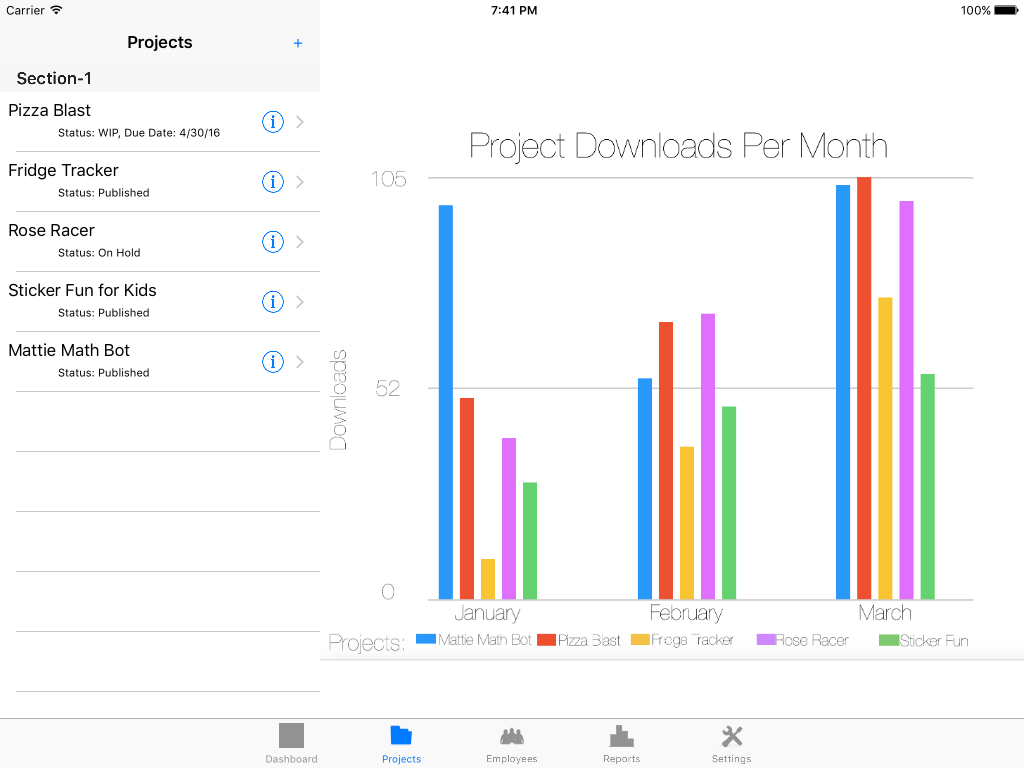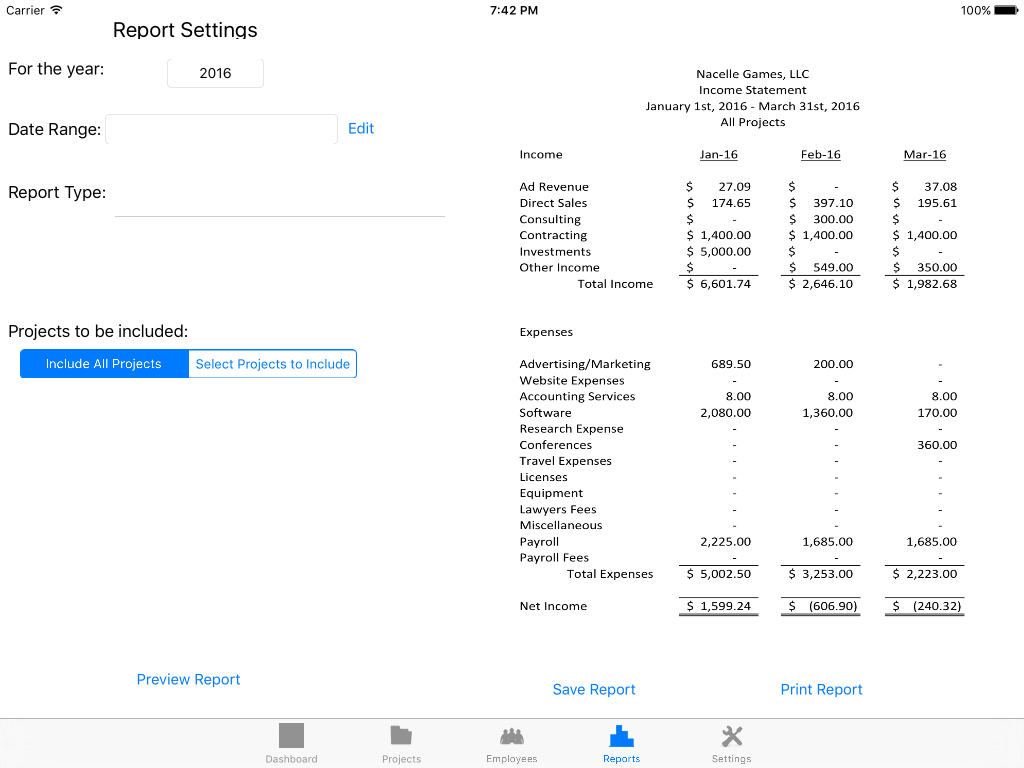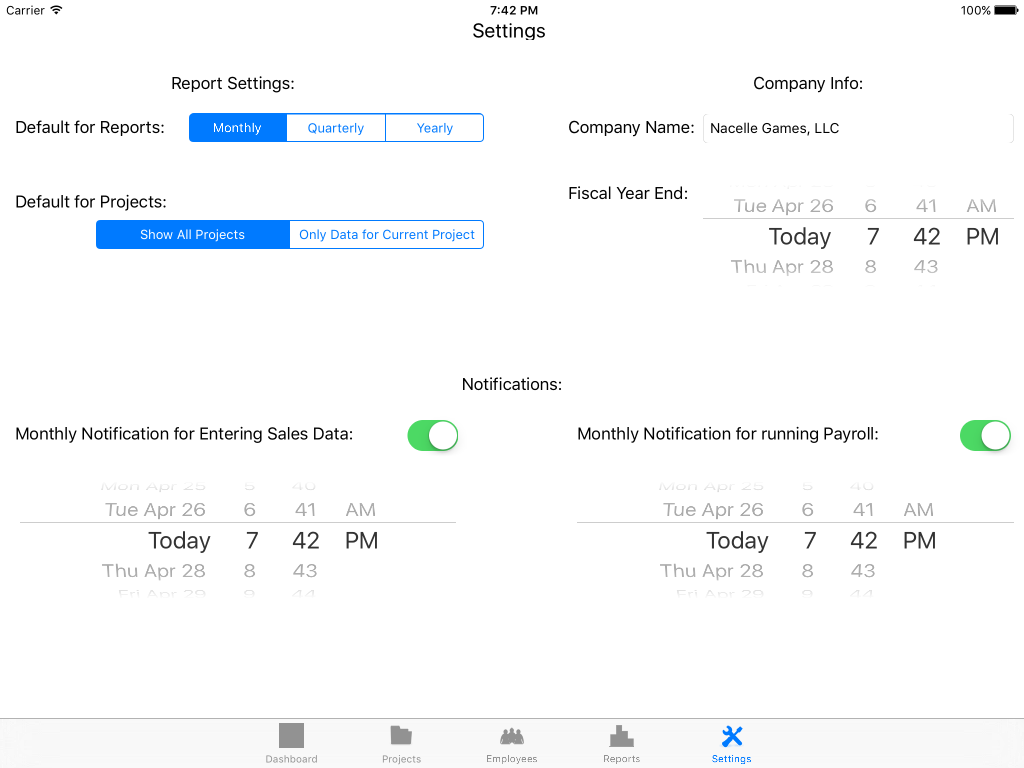Our programmer writes a quick blog post detailing a workaround for the "missing required icon file" issue when uploading packaged iOS apps built with Unreal Engine 4.
Read MoreHow to get the DPI Scale of UMG UI in Unreal Engine 4
A short post with an example of how to get the DPI Scale for UMG UI at runtime in Unreal Engine 4.
Read MoreHow to change the Xcode version for compiling Unreal Engine 4 C++ projects for iOS
A tutorial on how to change what version of Xcode is used to compile Unreal Engine 4 C++ projects, and what version is used to compile and package iOS projects in Unreal Engine 4.
Read MoreRose Racer - Update 1
An update on Rose Racer, including information about the game's release on Steam, and screenshots of a new race track!
Read MoreOn the importance of showing gameplay video when demoing your Gear VR game
Demoing "The Island" at ECGC 2016
Every year since our inception, Nacelle Games has gone to the East Coast Game Conference in Raleigh, North Carolina. This year even though we were bringing two demos to the conference, we decided against getting a booth; there were just too many fantastic sessions to go to, and we felt we could do demos in between sessions, as we talked to other developers.
To this end, we even printed small signs to attach to our bags, which said “Ask Me For A Demo!!” The signs had our company logo and website, and the logos for our two demos: “The Island”, a VR adventure game for Samsung Gear VR, built in Unreal Engine 4; and “Level-UP”, accounting software for game developers.
But something unexpected happened when we arrived at the conference the afternoon of the first day (which was a half day). We were telling our demoing plan to a fellow developer who had a large booth; and they offered to let us borrow a corner of their booth for an hour or two during lunch, if we wanted to show off our demos on the Expo Floor the next two days. We leapt at the chance to be able to get our demos in front of even more people then we were expecting.
We decided to focus primarily on our Gear VR game “The Island,” as we wanted to get as much feedback on the game as possible, and we thought getting people to play it on the Expo Floor would be a great way to get a lot of feedback. But we had a problem; how do we broadcast that we’re showing a game at the booth, and how do we show gameplay to people passing by the booth?
Unlike other virtual reality devices, the Gear VR is self-contained, so there isn’t a PC doing the rendering which could also display a live feed of the game on a monitor; instead all of the rendering is done on a Galaxy S6 smartphone, which is snapped into the Gear VR headset. We didn’t (and still don’t) have a workflow for capturing video of any kind directly from the Gear VR, much less a live feed of someone playing our game.
So we fell back on what we knew, and decided to just record some gameplay footage directly out of the Unreal Engine 4 Editor. We edited the footage into a short gameplay video we could show on a monitor at the booth, and just looped the video continuously. We felt the video was a little rough, but given the short turnaround time, we had to go with it. We just hoped it would turn out ok; and to our amazement it wasn’t just ok, but surpassed all of our expectations!
I’ve embedded the video below so you can watch it; this is the exact video we showed at the conference. The video is just under 2 minutes long, opens with an animated version of our company logo, shows about 90 seconds of gameplay starting at the beginning of our demo, and then ends with the game’s logo. We set the video to loop at the booth, so it was playing continuously during demoing.
The video doesn’t have any audio; this is because the screen capture software we had access to at the conference doesn’t capture audio. We weren’t concerned with that though, because the Expo Floor was so noisy you wouldn’t the able to hear it anyway.
The video looks simple, and outright plain. But it worked greatly to our advantage, and we believe was a key aide in getting many more people to play our game then we would have if we didn’t have the video. We recommend anyone showing a Gear VR game to create a similar video. Let us tell you what it did for us.
First, the video did what we expected it to do, which was to broadcast to people passing by the booth that we were showing a game. Several people passing by the booth stopped to watch the video.
Second, it allowed us to segue nicely into talking about “The Island” to anyone who stopped to watch the video. We told them it was a VR adventure game, and asked if they wanted to play an early demo of the game.
But the amazing thing was when someone had the Gear VR on and was playing the game; then the video took on a whole other paradigm. Whenever someone came up to the booth while someone was playing our game, they would assume the video they were watching was of live gameplay. Every single person who watched the video during another player’s play session told us they thought the video was of live gameplay. Every. Single. Person.
The illusion only lasted for about 30 seconds or so; up until either the video looped or the person watching the video noticed the camera movements on the screen didn’t exactly match the head movements of the person playing the game. But it worked long enough to get someone invested in the current player’s play session, have an immediate connection and understanding of how the game was played, and build anticipation of what the experience of playing the game would be like. And most importantly, it got them interested in wanting to try out our game.
We believe there were a few things that helped cause the illusion of the video being live gameplay:
First, the video starts where our demo starts, and only shows what is in our demo. Second, when recording the video, we tried to move the camera in a way that would be a rough approximation of what it might look like if someone was looking around with their head. Even though we were using a mouse to control the camera in the Editor, we tried to do long, slow, sweeping looks, so it appeared to be more natural. Doing this caused the camera movement in the video to tend to match, or at least be a close approximation of, a player’s head movements when playing the game.
Also, it just so happened that our demo’s playtime was about 3 to 4 minutes in length; which is about long enough for the video to loop only once. This limited the number of times the illusion of live gameplay was broken by seeing the video loop.
When we show “The Island” in the future, ideally we would like to have a solution for actually showing live gameplay from the Gear VR. It will more then likely involve a networking solution, where we have a client copy of the game running on a PC that is either spectating the game session on the Gear VR, or is being remotely controlled remotely by it. Whichever way we end up doing it, it’s still something that will take time to develop; and it wasn’t a solution we had time to implement while at the conference.
But when we were in a pinch, this short gameplay video worked wonders for us. It broadcasted to people passing by the booth that we were showing a game; it allowed us to segue nicely into talking about “The Island” to anyone who stopped to watch the video; and it provided enough of an illusion that people assumed they were watching live gameplay. And we feel all of these things lead to us having more people play our game then we would have if we didn’t have the video.
If you can’t show a live gameplay feed of your Gear VR game, we highly recommend creating a short gameplay video that starts at the beginning of your demo, and lasts between 1 and 2 times the length of your average play session. Then you can enjoy the same benefits we received from our video, and hopefully get more people to play your game. We hope this helps another developer show of their game(s) for Gear VR at their next conference.
Happy demoing!
For updates on both “The Island” and “Level-UP”, follow us on Twitter (@NacelleGames) or Like our Facebook Page (facebook.com/NacelleGames). Thanks!
Demoing Level-UP at ECGC 2016
Last week, Jon and I had the amazing opportunity to go to the East Coast Game Conference (ECGC) in Raleigh, North Carolina. We knew even before buying our tickets that we wanted to make the most of this opportunity. So we prepared two demos to show others at the conference; one for our VR Adventure Game called “The Island,” and one for our Game Development Accounting Software called “Level-UP”.
Because of the nature of these two projects, and our own personal knowledge of the two, we decided that Jon would be responsible for The Island Demo, and I would be responsible for Level-UP. On the drive to Raleigh, we practiced our pitches for both projects, so that either one of us could talk about both projects, even if we were only responsible for one demo. I believe this worked out very well for us. We knew what our duties were, what we were talking about, and our goals for the week.
My goals for Level-UP included talking to every small indie development studio that had a booth on “Indie Alley,” as well as anyone else I ran into that might be interested. I did pretty good, making sure to visit as many booths as I could, talking to studio owners, and showing them how I think Level-UP could really be an asset to their business tracking and bookkeeping. The results were astounding!
Everyone I talked to was extremely impressed and excited for Level-UP. One person even described it as “Quickbooks for Indies”. Other comments included “It’s so simple and looks easy to use”, “I need this now! When can I get it?”, “Brilliant idea, there’s nothing else like this out there!”, and “I’ll be first in line to buy it!”. With such positive and exciting feedback, Jon and I know we definitely need to keep pushing towards our goals of having a Beta for Level-UP over the summer, and have the final version published in Early Fall of this year. This will be a challenge, but with hardly anyone having anything critical to say about the app, we know it is the right decision to push through and persevere!!
With all this talk about how awesome Level-UP is, you are probably wondering what is it that everyone is so excited about? Well let me tell you….Level-UP is an app specifically made for game developers to help them keep track of their business and especially their financial matters. One thing that makes game developers, and especially indie game developers, different than any other industry is that to truly have accurate accounting, we need to look at our numbers on a “per project” basis.
For example, Company ABC hires Joe Smith to do the art on their Project A. They arrange to pay him 10% royalties after the project has been published. A typical company would have to take the time (and remember to do so every month) to look up game sales information to calculate Joe’s paycheck, but with Level-UP, we take an approach that helps you eliminate those steps.
Level-UP will remind you once a month to enter your sales data (so you never miss entering data), and only one time do you need to enter Joe Smith, what project he is working on, and his pay rate for that project, into Level-UP. Once you have entered your sales data, we will calculate Joe Smith’s pay for you. All you will have to do is run a report (which we will remind you to run), and then pay him accordingly.
The report will show you how much you owe Joe Smith, per project, and give you a breakdown of how the payment amount was calculated. So instead of taking the extra time to look up rates, look up sales, and calculate his pay, you just make sure the sales data is all entered and we calculate the pay for you! This makes it so easy for game developers who usually stay far far away from “bookkeeping” work!
There are lots of options and details I have yet to mention about the app, but hopefully this example will give you a better idea of what Level-UP is all about!! Thank you to everyone that allowed me to share Level-UP with them at ECGC last week!
And whether or not I was able to show you the app in person, I hope you will enjoy these screenshots! And please signup for our Level-UP newsletter below, as we will be updating our fans on the app's progress, as well as announcing the upcoming dates for Beta testing soon!! ☺





Level-UP your Game Development Business!!
There are so many details to keep track of when running your game studio, you need a dozen or more spreadsheets, or pay an accountant to keep track of everything. But not anymore! Today I am happy and excited to announce “Level-UP: Game Development Accounting Software” for iOS and OS X.
Read MoreMaking the Apps we want to use...
Over the last 12 months or so, here at Nacelle Games, LLC, we have done a lot of research and work to find ourselves and where we can best use our time and resources for what we want to accomplish. After many late night discussions, we finally decided to take a break from the bigger games (that we do still want to work on and finish!) and focus on smaller apps that our 2 person team can accomplish within a matter of months and not years. This is how we started coming up with projects like Baby's First Loves and Fridge Tracker. Our 2016 year has started with one year long goal in mind...to publish. We are furiously working whenever we can to complete and publish apps and yes, some games out there to start really putting our name and brand out there and recognized. Several projects we have been working on for months, but are still trying to get the final touches done so you (the user/player) will not experience any bugs upon it's release. We just wanted to take a moment to say thank you to all of our fans and supporters, and also to introduce you to our brand new website! We have updated our look from the old website, but you should be able to still find everything you need from us. Let us know if you have any suggestions or would just like to connect! Thank you! :)
Getting an Unreal Engine HTML5 build to work when hosted on Dropbox
Dropbox is great for sharing files. But, it can cause headaches when trying to host web builds of games. In this post, our lead programmer takes you through how to modify the files of an Unreal Engine 4 HTML 5 build so you can host the game on Dropbox.
Read More
